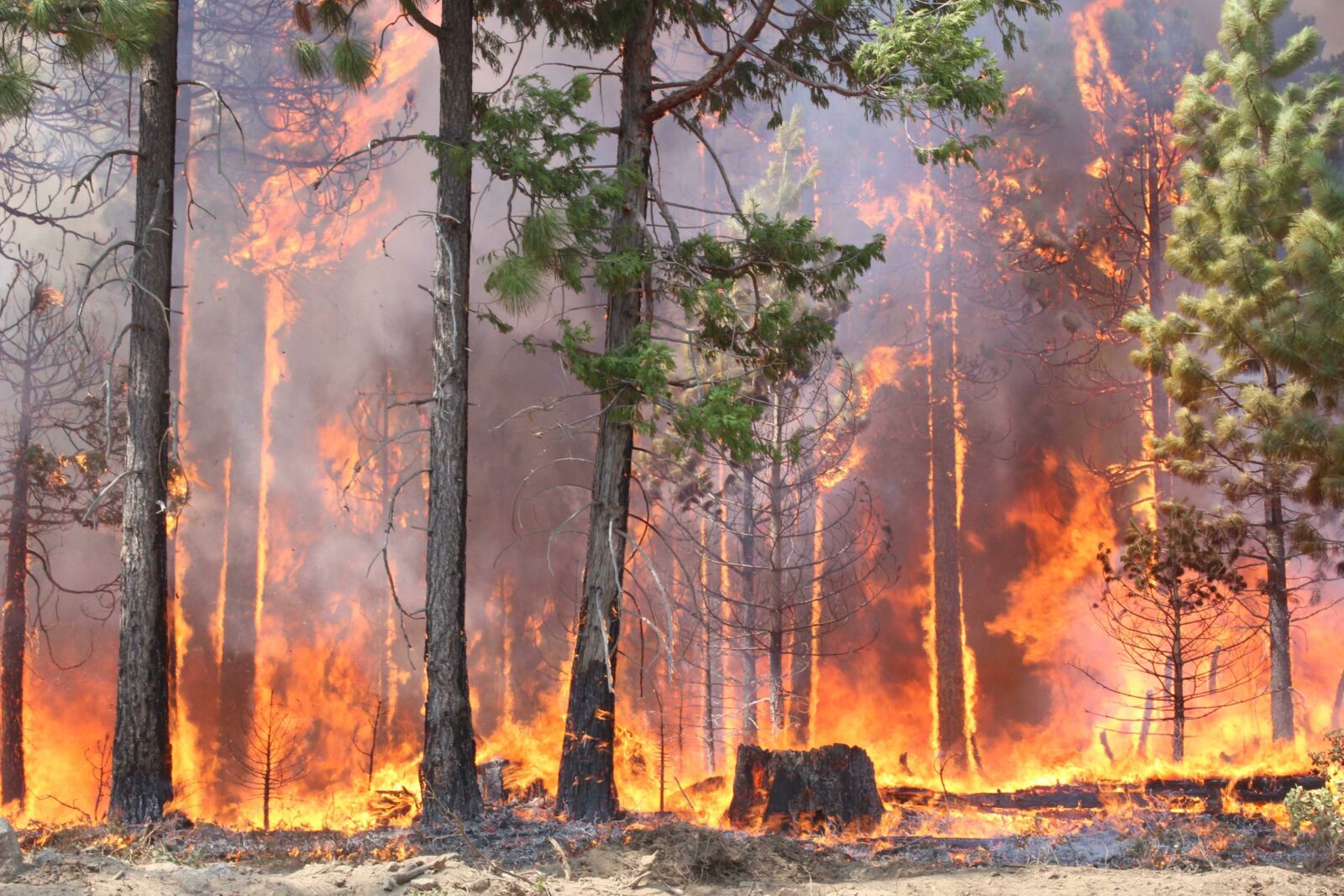We are now in the middle of what forest managers call a fire year. You’ve read that correctly, fire seasons are lengthening so we no longer have a fire season. In 2023, wildfires burned nearly 2.7 million acres across the United States. National Forests are increasingly affected by large scale, severe wildfires. Unfortunately, all research points to this becoming the new normal.
Wildfire and its impacts to forests can be hard to understand. Here are five common questions that explain how tree planting can help National Forests recover from wildfire.
Is all fire bad?
No. Fire is a critical regulating force in many of forests. Depending on the ecosystem, many forests have a rich history of fire. Historic tree ring analysis shows that regular, low intensity fires played a role in regulating forest structure in such a way that prevented the so-called “mega” fires that we see today. Native American cultures regularly burned forests to provide better wildlife habitat or for other resource benefits.
During the twentieth century, as our knowledge of forest ecology evolved, forest managers implemented a strict fire suppression policy that promptly extinguished any fires. During this time, forests grew increasingly dense and unhealthy. As forest health declined, insects, disease and drought became increasingly severe. Climate change has brought warmer and dryer conditions to much of our country, exacerbating the risk and intensity of fires when they do occur. Now, fires approaching 200,000 or even 500,000 acres are normal.

Mike McMillan, USFS
Do all areas affected by fire require reforestation?
During a typical fire season, wildfires will affect many, many acres of National Forests. But not all fire is bad. Some wildfires are healthy burns – fires that are relatively low severity and beneficial for a given forest type. In some places, forests require little to no intervention to regenerate.
Still, many landscapes affected by severe fire will require active reforestation. Wildfire accounts for a staggering 80 percent of reforestation needs on National Forests.
Immediately after the fire, foresters assess damages and make restoration plans. Working with the U.S. Forest Service, we identify areas where tree planting will provide the most benefit. Foresters consider a variety of factors including elevation, species, land cover and fire severity to create a ‘prescription’ for the site. Once plans are made, the NFF funds projects to plant native trees with donations from our supporters.
In some cases, where a fire burned in low to moderate intensity, some tree species may be able to regenerate naturally because seed banks (seeds available in cones from live trees) are still present. Only tree species unable to regenerate naturally are selected for replanting.

What are the negative effects of wildfire?
When a severe fire sweeps across a forest, it can burn all living vegetation. Steep mountainous slopes become vulnerable to erosion and wash-outs that impair soil quality and downstream water quality.
Wildfire also contributes to the loss of important wildlife habitat. National Forests provide habitat to more than 3,000 species, including more than 400 threatened or endangered species. While some species depend on or have adapted to fire, many still find themselves without a home after a severe wildfire has occurred.
After severe fires, forests can take decades to recover, if they do at all. The greatest threat to some of burned forests is losing rich, diverse native forest habitat to brush or other non-forested habitat. Tree planting helps restore these areas to become forested once again.

How does tree planting help our forests recover from wildfire?
By restoring forest cover, tree planting helps the landscape recover from wildfire. Prompt reforestation is important to prevent soil erosion and protect water quality in downstream rivers and lakes. Tree planting ensures that National Forests can provide important wildlife habitat, sequester carbon and offer beautiful recreational opportunities for visitors.
The trees that we plant are critical for the future of these forests. Since we can’t restore every single acre, we rely on the trees that we plant to mature and become a seed source for future forests.
How can I help National Forests recover from wildfire?
National Forests need our help. Through NFF's Reforestation Program, we’re helping restore forests after wildfire, but we can’t do it alone. We invite you to:
- Learn more about tree planting and National Forests
- Visit a nearby National Forest, share your story with us
- Share NFF and our content around tree planting and why National Forests matter
- Plant trees today!

